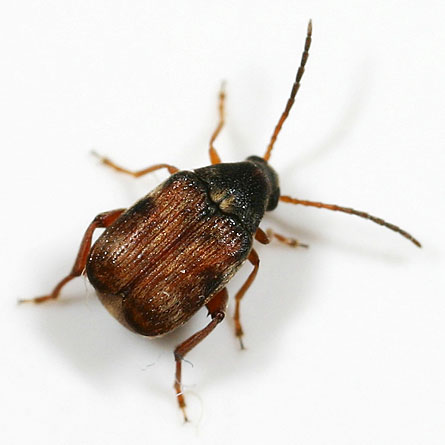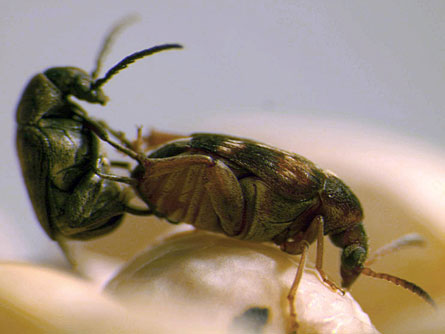Chalk up another casualty in the battle of the sexes. Playing the field does not help female seed beetles find the best father for their offspring, researchers say, dispelling a common notion about what drives these beetles to mate with multiple males.


Female seed beetles — and females of many other species — mate with several males even though one provides enough sperm and mating can be physically risky, says Trine Bilde of the University of Aarhus in Denmark. Biologists have speculated that shopping around may allow females to increase their chances of getting good genes for the kids.
It’s a nice idea, but after some five years of tracking the mating successes of Callosobruchus maculatus seed beetles, Bilde and her colleagues report just the opposite. It was the males with poorer genes that ended up fathering a greater proportion of the offspring, the researchers report online June 25 in Science.
Testing the idea required beetle farming of epic proportions. The researchers first created 19 lineages of beetles bred to have as little genetic variation as possible. To figure out which of these strains had the fittest fathers, Bilde crossbred the lineages in all possible combinations and kept track of the offspring. From these scores, she ranked males as high-quality (tending to father more surviving offspring) or low-quality (fathering fewer).
Then Bilde set up two mating opportunities for females in each of her lines, once with a high-quality dad and once with a low-quality one. Contrary to her predictions, lower-quality males ended up fathering about 10 to 20 percent more of the offspring. “I was surprised,” Bilde says. The idea that a search for good genes could be driving the evolution of multiple mating in these beetles thus seems unlikely, she says.
From a female point of view, finding those good genes would indeed have been worth the effort. The researchers found that mating with high-quality males instead of duds meant 18 percent more of a female’s offspring survived to adulthood. And the daughters of high-quality males had 17 percent more offspring.
Just what’s giving low-quality males the advantage in this experiment isn’t clear, Bilde says. Males are competing with each other to fertilize the largest share of eggs and have evolved spikes on their genitals that appear to prolong mating encounters and win paternity shares away from other males (SN: 2/14/09, p. 16). Maybe the low-quality males have more effective spikes, Bilde speculates, or maybe they release some compound that inadvertently harms females.
Another researcher who has studied multiple mating, Tom Tregenza of the University of Exeter’s campus in Cornwall, England, praises the new beetle experiment for its careful protocol. The researchers repeated the tests with independent measures of the males’ genetic quality, which gave them “a really robust effect.”
Tregenza says there’s good evidence in some species for an alternative explanation: multiple mates can help females reduce the risk of inbreeding. The experimental case for the good-genes idea, though, remains “pretty limited.”





